features
Pancake Day: Twisted’s guide to the best alternative pancakes to knock up today
21 Feb 2023
6m
It’s Shrove Tuesday, which means many of us will no doubt be dashing to the shops today to stock up on eggs, milk and flour.
But if you’re not feeling excited by the idea of a bog standard pancake with lemon and sugar this evening, then why not mix it up and go for an alternative? And no, we’re not talking about simply adding some Nutella.
You see, pancakes, in their very essence, have been enjoyed across the world for centuries. When you strip them to their core, they’re basically batter cooked with either a sweet or savoury filling, and there are countless variations of them out there.
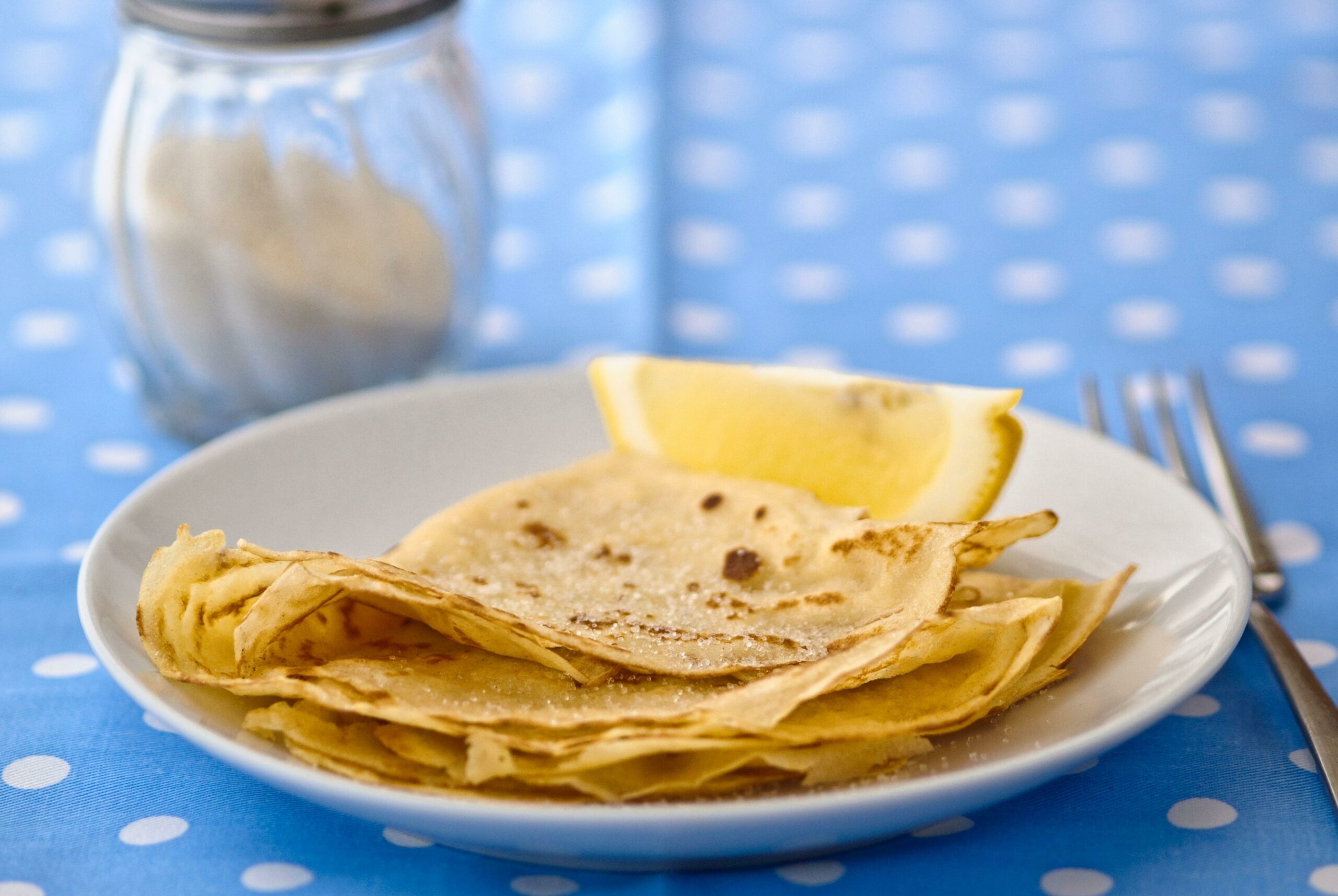
In need of something different this pancake day? (Credit: Alamy)
So, if you feel like mixing things up today, don’t stop at a different filling. Celebrate the pancake of another culture. The possibilities are endless…
To help you take your pancake game to the next level, Twisted has compiled a list of pancakes enjoyed around the world. It’s only a selection (honestly, there are too many to count) but we’re confident it’ll ignite your imagination.
Hoppers
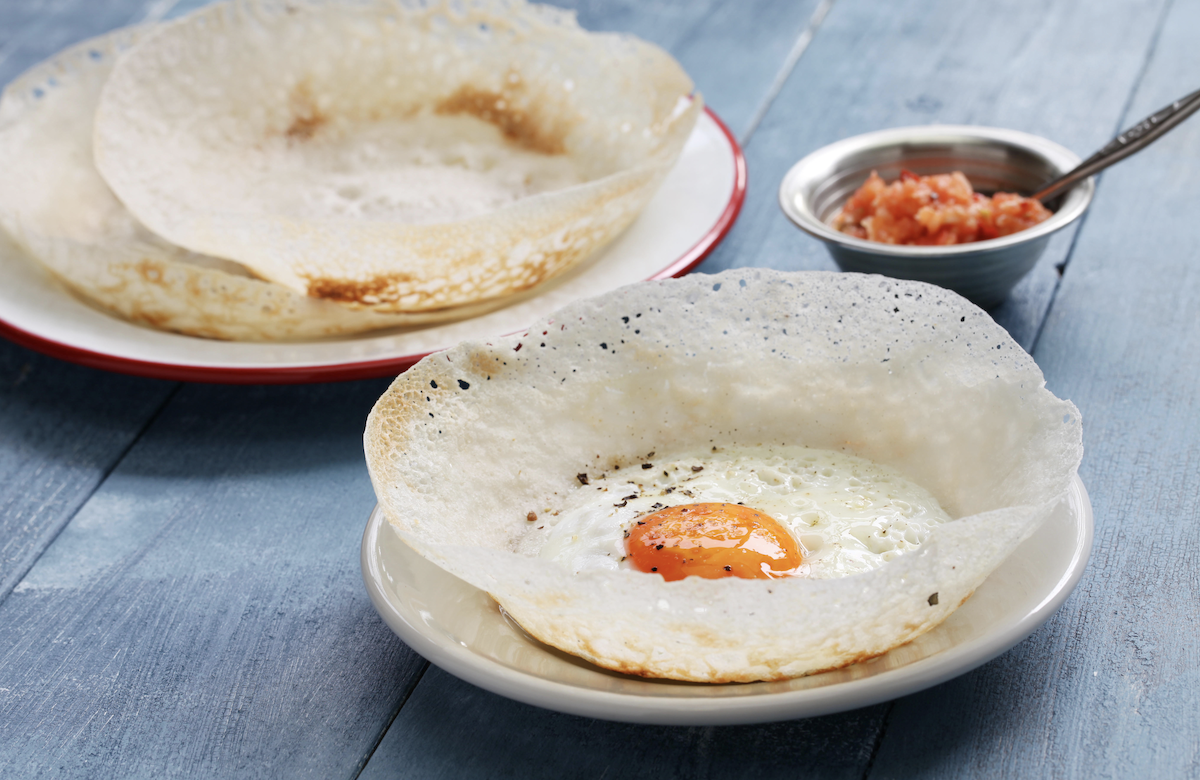
Serve hoppers with an egg and a side of sambal sauce, or eat with curry (Credit: Alamy)
If you haven’t tried a hopper before, you’re in for a treat. Made from fermented rice and coconut milk batter, the Sri Lankan street-food staple, which date back 2,000 years, has its origin as a breakfast dish, but is today enjoyed savoury at any time of day.
Hoppers are fried into the shape of a bowl, making for an impressive spectacle and – more importantly – a convenient vehicle for any filling you also want to throw into the mix.
They’re lighter than a traditional pancake, and are typically filled with curry or an egg, and a punchy sambal sauce.
READ MORE: Check out Twisted’s recipe for red velvet pancakes
Dosa
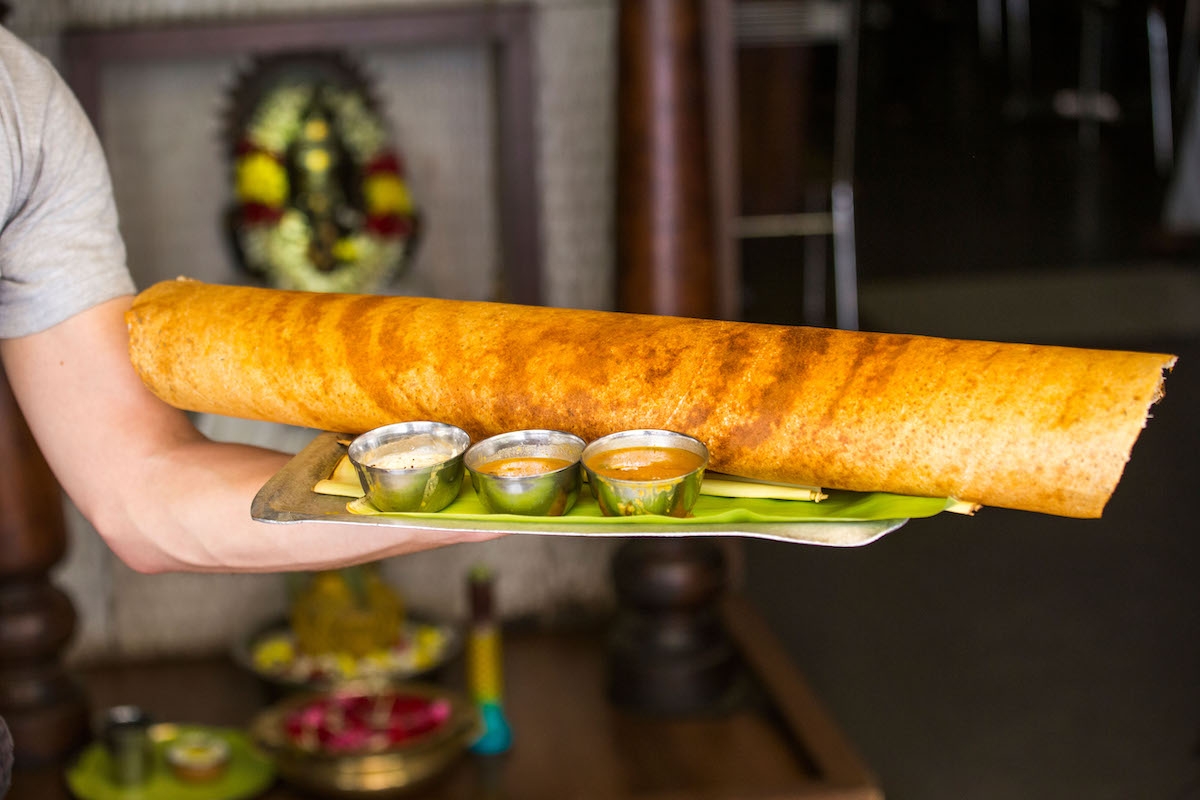
Dosa are pancakes of sorts, enjoyed in India with chutneys and curry (Credit: Alamy)
Originating from South India, the dosa is a thing of beauty, made from fermented rice and lentils and curled into a dome shape, served simply with chutneys and sometimes even filled with curries, too.
Its origin story is up for debate, with some historians dating it back to the 1st century AD, in the ‘ancient Tamil territory’, whilst others link it to Udupi – a city in India, thanks to some unearthed 12th century texts.
Whilst plain dosa in itself is pretty darn great, there are loads (and we mean loads) of varieties of this pancake. Perhaps one of the most loved is masala dosa (with a slightly spicier batter), whilst you can also enjoy a neer (or water) dosa, made of just rice batter, and an atta dosa (which incorporates wheat into the mixture).
Once you go down a rabbit hole of the hundreds of varieties of dosas, we promise you’ll be eating nothing else.
Okonomiyaki
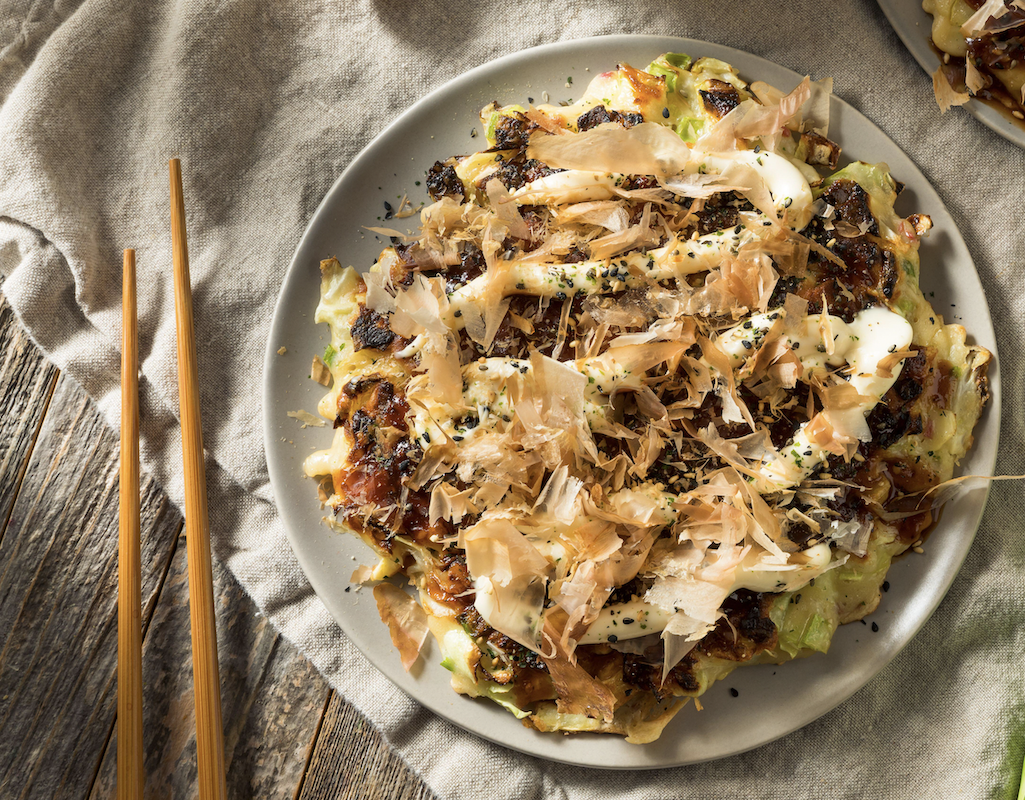
Okonomiyaki was enjoyed in the war, when food sources like rice weren’t readily available (Credit: Alamy)
Okonomi roughly translates to mean “how you want it,” and that pretty much sums up this Japanese pancake of sorts. It’s essentially a pan fried dish consisting of a wheat flour and egg batter, nagaimo (yam), dashi, cabbage, and whatever protein and seasoning you want to add, too.
True to its name, okonomiyaki has evolved since it was invented just prior to World War II, and is enjoyed differently today throughout Japan’s regions.
The two most popular variations are the Kansai-style (also known as the Osaka-style) and the Hiroshima-style. The former typically sees all ingredients mixed into one batter and the latter sees the batter cooked into a thin crepe, and the ingredients layered on top, with the common addition of yaki soba noodles.
Typical toppings found on both styles of okonomiyaki include various meat and veg, as well as Japanese mayo, okonomiyaki sauce (made of ketchup and Worcestershire sauce) pickled ginger, nori and bonito flakes.
Jian Bing

Jian Bing originate from North China and are enjoyed savoury (Credit: Pleasant Lady Trading/ Instagram)
A Chinese street-food staple, not dissimilar to a crêpe, the Jian Bing is also traditionally a breakfast snack, which originated over 2,000 years ago in the Shandong province, of Northern China.
Its batter is made of wheat and mung bean flour, and they pancakes are usually best served wafer thin, with an egg cracked on top as it’s cooked, and spread evenly onto the mixture.
Fillings can vary quite a lot, but there’s usually a crunch from deep fried crackers (bao cui), a couple of sweet and spicy sauces, spring onions and coriander in the mix.
Today, you’ll also find Jian Bing filled with Chinese sausage, marinated chicken, beef or vegetables.
Msemen
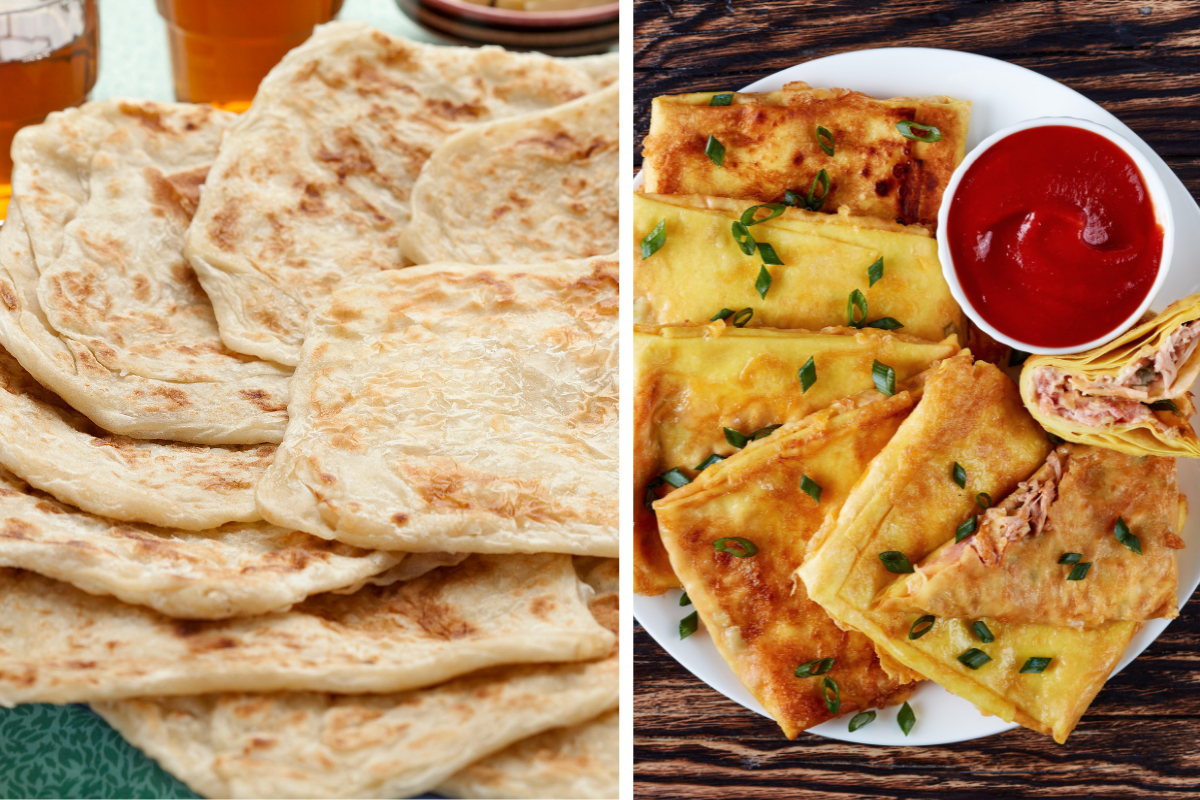
Msemen can be eaten sweet or stuffed with meat (Credit: Alamy)
Msemen are square pancakes, which can either be enjoyed sweet (with honey) or savoury (stuffed with meat or veg, like onion and tomatoes). They’re usually flaky and comprised of layers of crispy dough, and their name originates from the Berber word for “well knead”.
Whilst the origin of this breakfast and tea time favourite isn’t well documented, they are known to have been present many centuries ago during mealtimes in North Africa and are most often enjoyed today in Morocco.
In truth, these are probably more like flatbreads, with an elastically dough made with flour, durum wheat semolina, yeast, water, butter and sugar – but they’re too delicious not to include in our list.
READ MORE: The internet is obsessed with ‘pancake boards’ – and they’re so easy
Japanese Soufflé Pancakes
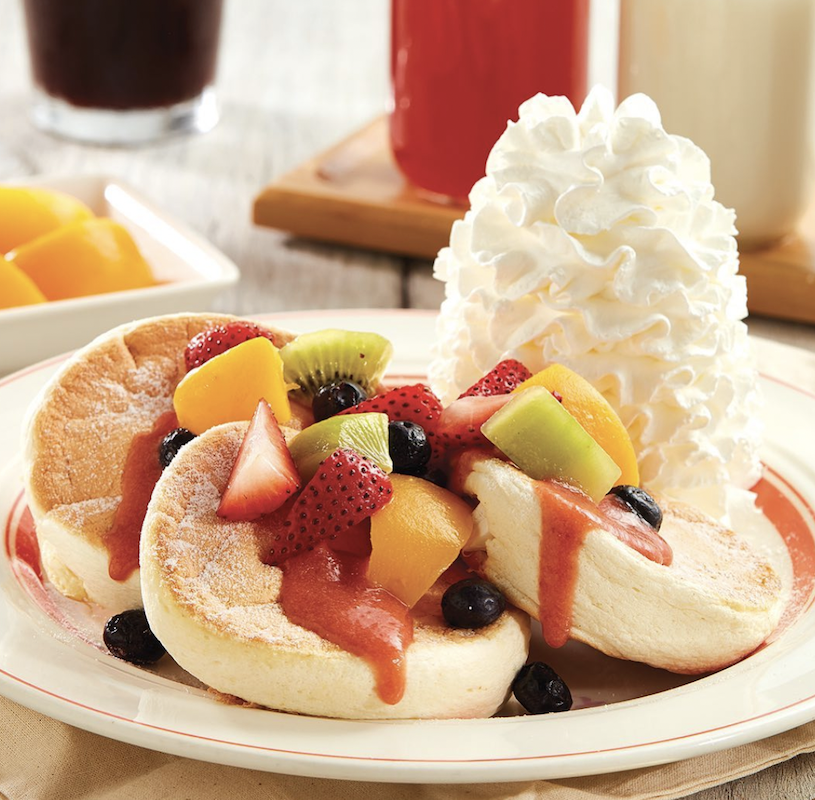
Soufflé pancakes from OG breakfast spot, Eggs ‘n Things (Credit: Eggs ‘n Things)
Another Japanese revelation, here – soufflé pancakes. Seriously, they’re like taking a bite out of a cloud.
Thought to have originated in the 70s in Hawaii in diner, Eggs N’ Things (which later expanded to Tokyo) the pancake is today seen as Japan’s iteration of the American pancake, enjoyed widely throughout the country – particularly in Harajuku.
Somewhat of a social media hit of late, due to the rather aesthetically pleasing jiggle, these are usually enjoyed sweet, and are made by separating the eggs and whisking the whites before gently incorporating it back into the batter, to create a fluffy, airy mixture.
Aebleskiver

Aebleskiver are enjoyed by the Danish over the Christmas holidays (Credit: Alamy)
Aebleskiver don’t look like traditional pancakes – they’re cute little balls that you can pop into your mouth in one bite. They’re Danish, and typically enjoyed over the Christmas holidays, but can also be eaten all year round – nobody’s checking!
Typically made in pans with small spherical holes which define their shape, they’re often dusted with cardamom, nutmeg and sugar, and like soufflé pancakes, their fluffy texture comes from separating the egg whites and then re-combining them into a mixture of flour, buttermilk, baking powder and sugar.
We don’t know the exact origins of these pancakes, but researchers have found them in 300-year-old pans made out of copper. Some have even speculated they came from the Vikings – cooked to ensure they had a hearty meal after battle.
Potato Pancakes
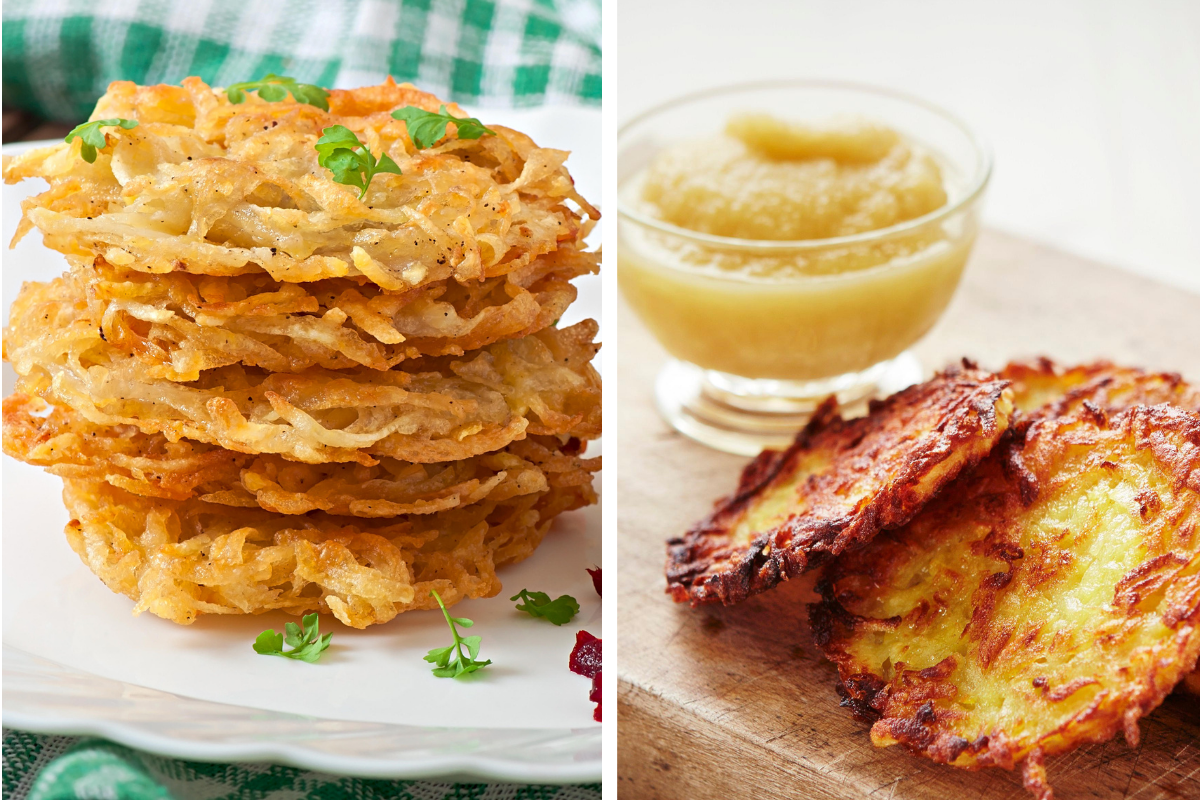
Potato pancakes vary around the world. Pictured are Swiss rosti (left) and German pancakes with apple sauce (right) (Credit: Alamy)
Who doesn’t like potato? There’s a reason eastern European countries, like Germany, Russia, Austria and Poland have been cooking them for centuries.
Usually made of ground or grated potato combined with matzo meal or flour, and bound with either egg or applesauce, there are a variety of different ways of serving and adapting these pancakes.
In Poland, it’s common to add cottage cheese to potato pancakes (or placki ziemniaczane), or even meat and goulash. Meanwhile, the Swiss make a version akin to a rosti, without any egg or flour – not dissimilar to the American hash brown.
Some varieties of potato pancakes (latke) also have their roots in Jewish culture, and are typically enjoyed on Hannukah across the world. And they don’t just come from eastern Europe: the Koreans also have their own potato pancake, named Gamja-jeon, typically enjoyed with soy sauce.
The list is a long one… we could go on.
Kueh Penyaram
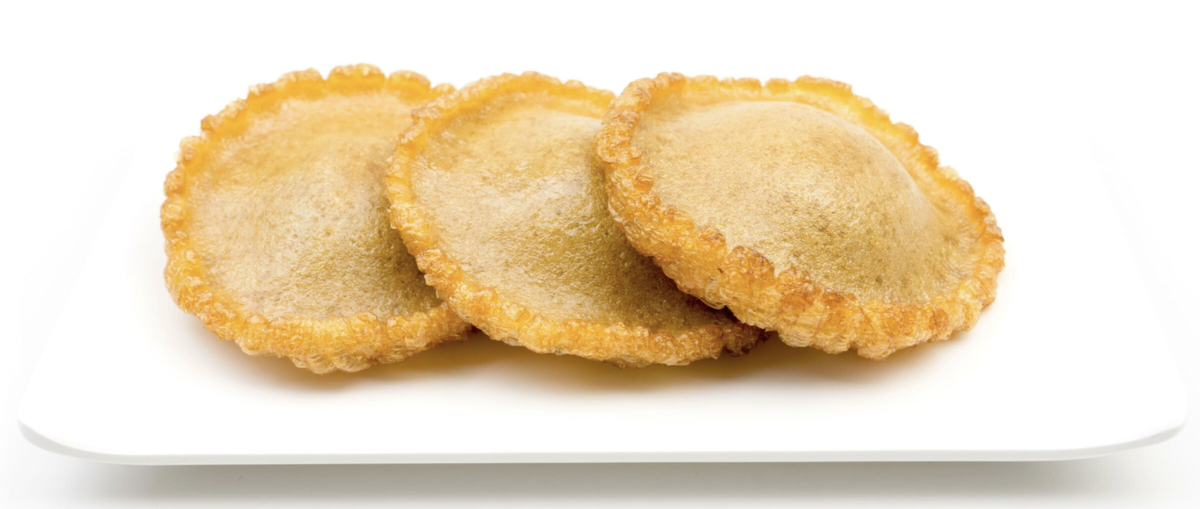
Kueh Penyaram are a traditional dessert of Borneo (Credit: Alamy)
Penyaram are pancakes made of rice and wheat flour, and fried in oil. They are also known as ‘Mexican Hat’ due to their curved up sides and puffy centres, and Kueh UFO (also as a result of their shape).
Well known to East Malaysians and Indonesians, and thought to originate from the Iban people, these are today enjoyed for breakfast and afternoon tea across Sarawak, Borneo.
They’re chewy in texture, and are cooked with white sugar or palm sugar – in particular a special type native to the area, named gula apong.
One of the more niche options on our list, you may not have heard of these before, but you can check out Masterchef winner Ping Coomes talking about them on her Insta, if you want to know more.
We don’t know about you, but we need to try these, stat.



.jpg_dU0O4c?tr=w-2560,f-webp,q-70)